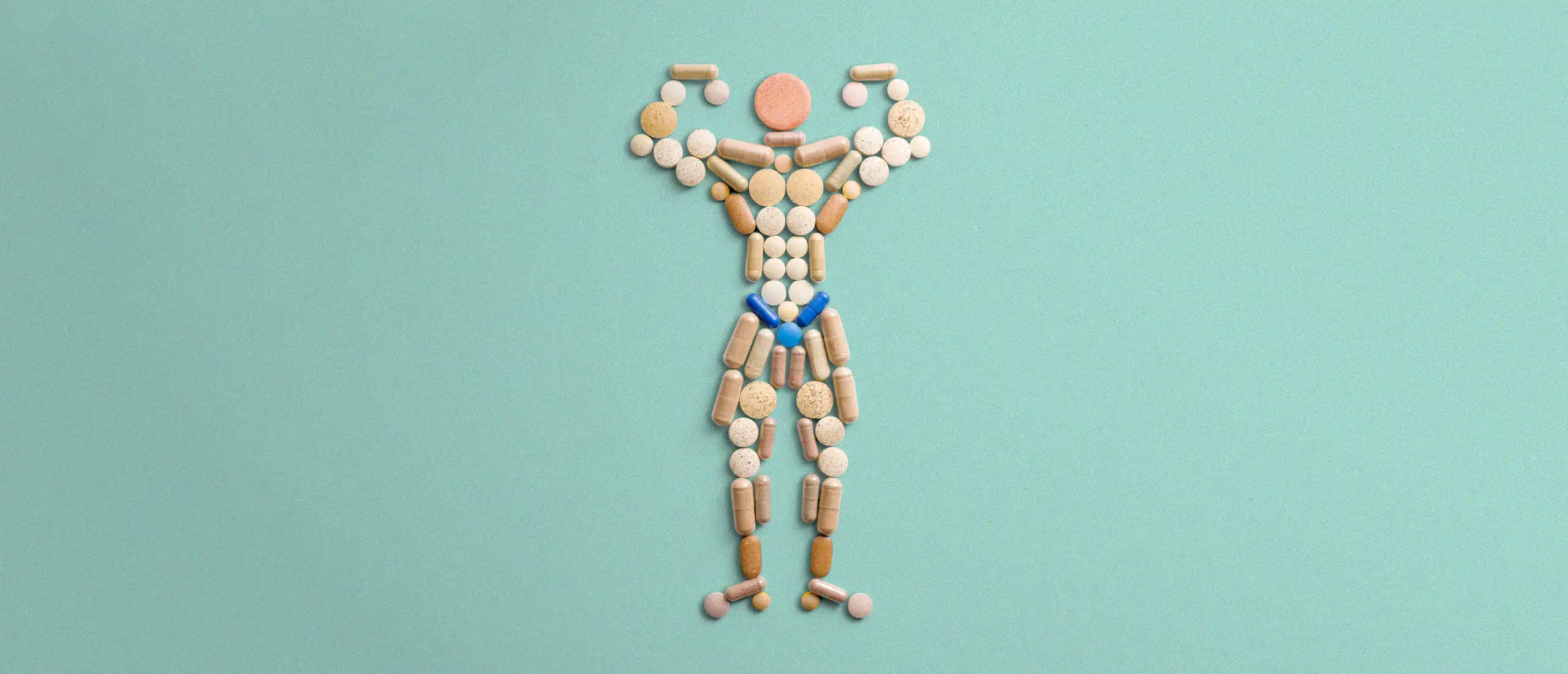Is TRT Steroids – What’s the Difference?
At a Glance
- Testosterone replacement therapy (TRT) is used to treat low testosterone
- Taking TRT is not the same as “taking steroids”
- The difference is in the usage and also the dose of testosterone
It may seem like testosterone replacement therapy (TRT) and “taking steroids” are one and the same. Not quite. Understanding what makes TRT different from “steroids” is key, whether you’re considering testosterone therapy or tempted by the idea of quick gains.
What Is Testosterone?
Testosterone is the major sex hormone in men. The majority, 90 percent, of testosterone is released by the testes whereas the other 10 percent is released by the adrenal glands. Testosterone is an important hormone not only for sexual development but also for physical growth and mood regulation. It helps keep several body functions humming along, including (1):
- Sex drive (libido)
- Sperm production
- Mood
- Muscle strength and size
Testosterone is crucial, so it’s hardly surprising that a lot can go sideways when there isn’t enough T to go around. If your levels of testosterone get too low, you can develop a condition known as male hypogonadism or “low T.” Symptoms of low testosterone include: low sex drive, depression, fatigue, loss of muscular strength and size, and moodiness (2).
One method for bringing testosterone back up to healthy levels is testosterone replacement therapy (TRT), which involves taking therapeutic doses of the hormone.
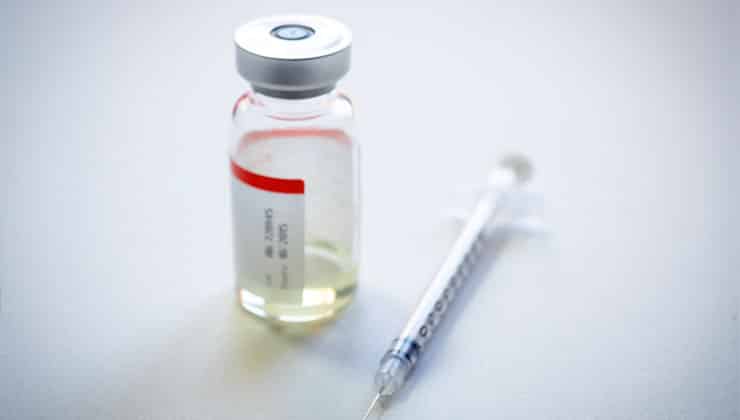
What Are Steroids?
When you hear the term “steroids,” your mind probably flashes to ripped bodybuilders and overly-aggressive behavior (“roid rage”). Although there is some truth to this, steroids are much more involved than this. Steroids are a class of compounds that share a similar structure and bind to hormone receptors in the body in order to promote certain functions.
The two main classes of steroids are anabolic steroids and corticosteroids.
The term “anabolic” means to promote growth and therefore testosterone is considered an anabolic steroid as it helps promote growth within the sexual organs, bones, red blood cells, and muscles.
Corticosteroids bind to glucocorticoid receptors in the body and active pathways that suppress inflammation and immune responses.
Endogenous (“produced within”) steroids are those that are produced by the body’s natural systems whereas exogenous (“produced outside”) steroids are administered to the body, in forms of prescription or man-made (synthetic) treatments (3).
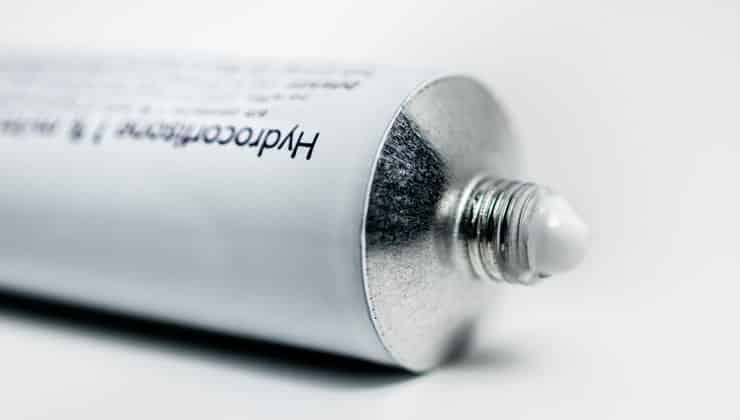
Health care providers often prescribe exogenous anabolic steroids, specifically testosterone (TRT), to treat low testosterone levels in men. But the terms “anabolic steroids”or “taking steroids” often refer to manmade steroids use by bodybuilders and athletes to build muscle and athletic improve performance (3).
Exogenous corticosteroids such as prednisone, dexamethasone, and cortisone are often prescribed to treat asthma, arthritis, autoimmune diseases, eczema, rashes, and some kinds of cancer (3).
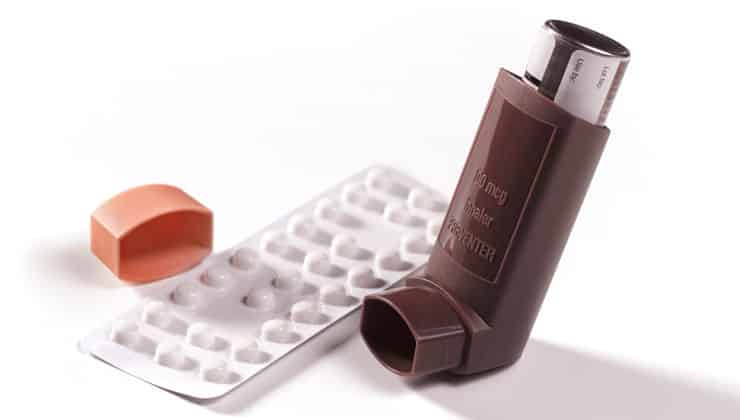
Steroids 101
- Anabolic steroids, including testosterone, promote growth within your body
- Corticosteroids help fight inflammation and immune responses
- Endogenous steroids are produced naturally within the body
- Exogenous steroids are produced outside the body
90 percent of testosterone is released by the testes. The other 10 percent is released by the adrenal glands.
Is Taking TRT the Same As “Taking Steroids”?
Testosterone is the main anabolic steroid hormone the male body produces (4). But while testosterone is a steroid, taking a testosterone injection or pill as prescribed by your healthcare provider is not the same as synthetic anabolic steroid misuse.
The phrase “taking steroids” as used in mainstream society often refers to misusing synthetic anabolic steroids that are derived from some sort of testosterone to promote growth and muscle mass in athletes and bodybuilders. This is different from taking prescription testosterone steroids.
Confused? Let us explain.
The main differences between prescription testosterone and misusing synthetic testosterone for bodybuilding are dosage and purpose. Men who take prescription testosterone as directed by their doctor for the purposes of treating male hypogonadism—or “low T”—is known as testosterone replacement therapy (TRT).
When you take TRT, your doctor works with you to find the right dosage of testosterone. “We try to optimize testosterone improvement and avoid side effects,” says Nick Dahl M.D. a physician who works with Hone Health. TRT can be taken in the form of an injection, pill or capsule, cream, or patch.
Synthetic anabolic testosterone (“taking steroids”) on the other hand, is used for muscle gains and performance benefits. They are a supercharged dose of testosterone—often 10 to 100 times the amount you’d get from a TRT dose (5).
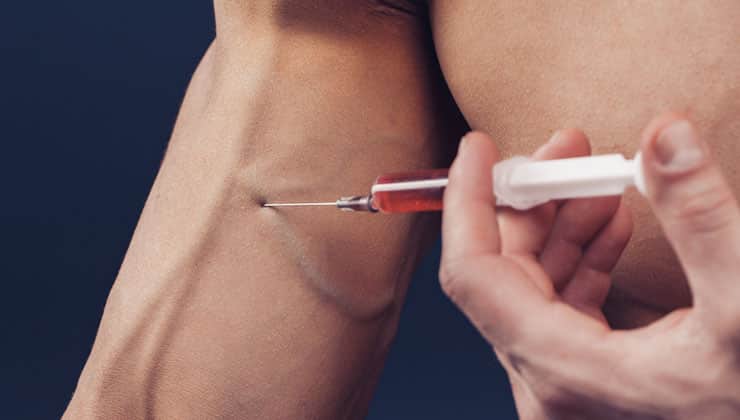
According to Dahl, synthetic anabolic-androgenic steroids often include additional ingredients, such as caffeine and human growth hormone (HGH), to generate massive muscle growth and enable males to work even harder in the gym. Like TRT, synthetic steroids can be taken via injection, pill, or cream.
Using synthetic steroids without a prescription is neither safe nor legal (5).
Getting that much testosterone at once, and repeating that high dosage over and over can lead to serious health issues, such as kidney problems, liver damage, high blood pressure, enlarged heart, changes in blood cholesterol, and an increased risk of blood clots (5).
Relying on steroids for muscle gains can actually cause your natural testosterone supply to dwindle over time, since testosterone in your body is regulated by a natural negative feedback cycle, leading to low T. When you use high dose steroids, your brain thinks you no longer need to make your own testosterone, and so it stops sending the signal to your testicles, Dahl explains.
Why TRT Isn’t “Taking Steroids”
- Testosterone is a steroid, as part of TRT
- “Taking steroids” refers to a non-prescription misuse of testosterone
- The difference is in the dosage and purpose
- “Taking steroids” dosages are higher and can cause damage to your body
- “Taking steroids” without a prescription can decrease your natural testosterone
Testosterone Replacement Therapy vs. “Steroids” for Low T
If testosterone is a steroid, why can’t you simply “take steroids” for low T? Because synthetic anabolic steroids deliver insanely high amounts of testosterone, and getting too much testosterone is just as bad as getting too little.
Plus, there are side effects of high dose anabolic steroids that aren’t too pleasant (5):
- Shrinking testicles
- Baldness
- Development of breasts
- Decreased sperm count
You’ll see far greater results—and fewer side effects—by using TRT for low T.
Is Testosterone Illegal in Sports?
To understand testosterone’s place in sports, we have to turn to guidelines set by the World Anti-Doping Agency (WADA), the agency that coordinates anti-doping rules and policies across all sports and countries. According to WADA, synthetic testosterone and any other substance with a similar chemical structure or other performance-enhancing drugs are illegal in sports (6,7).
That said, WADA does make some exceptions when it comes to using testosterone for male hypogonadism (8), but the athlete must apply for and meet the criteria for therapeutic use exemption (TUE).
References:
- https://www.health.harvard.edu/medications/testosterone–what-it-does-and-doesnt-do
- https://my.clevelandclinic.org/health/diseases/15603-low-testosterone-male-hypogonadism
- https://pubmed.ncbi.nlm.nih.gov/29562364/
- https://www.mayoclinic.org/healthy-lifestyle/fitness/in-depth/performance-enhancing-drugs/art-20046134
- https://pubmed.ncbi.nlm.nih.gov/29562364/
- https://www.usada.org/spirit-of-sport/education/testosterone-boosting-supplements/
- https://www.wada-ama.org/en/prohibited-list
- https://www.wada-ama.org/sites/default/files/resources/files/tue_checklist_male_hypogonadism_final_november_2021.pdf



